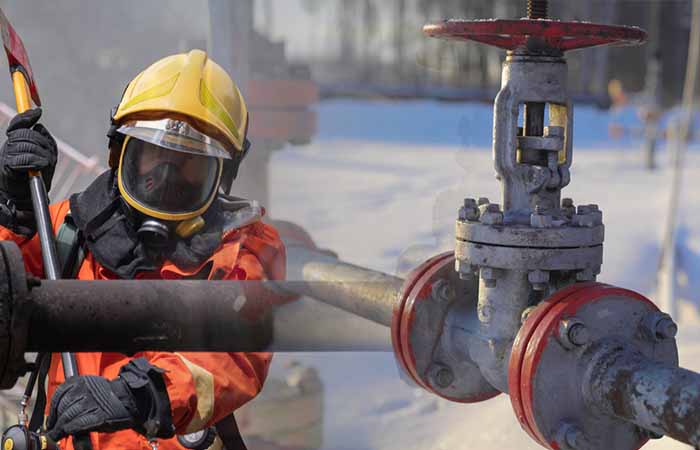A firestop or fire-stopping is a form of passive fire protection that is used to seal around openings and between joints in a fire-resistance-rated wall or floor assembly. Firestops are designed to maintain the fire-resistance rating of a wall or floor assembly intended to impede the spread of fire and smoke.
Can anyone install fire stopping?
It is not required by law for firestopping products to be installed by contractors with third party certification. However, having acquired third party accreditation means that the contractor has gone through an audit and their staff has received relevant training.
Now you can have the ability to estimate:
- Penetrations through walls and floors
- Block Out Blanks and Combos with multiple Penetrations
- Wall and Floor Joints
- Curtain Wall Joints
How does the U.S. Fire Administration create a national-level estimate of fires for the United States?
Because NFIRS data are not based on a statistically selected sample and do not represent the total number of fire incidents, the raw reported NFIRS data must be scaled up to create national estimates. These estimates are based on a method of apportioning the NFPA estimates for total fires, structure, vehicle, outside, and other fires. Generally speaking, the national estimates are derived by computing a percentage of fires, deaths, injuries or dollar loss in a particular NFIRS category, and multiplying it by the corresponding total estimate from the NFPA annual survey.
Think About Labor Issues
One area to consider is labor costs. Because fire suppression equipment is typically installed up high, make sure that you account for time spent on getting up and down from the ceiling, the cost of a scissors lift, or similar expense. Is it a retrofit that will require drilling through structural steel? Consider all the aspects your crew will have to work through when estimating your labor costs.
Begin Takeoffs
Now it’s time to start on the takeoff process. You’ll need to look at how much of each material you’ll need and keep track of it through the process. This process used to be handled using paper plans, a paper worksheet and colored pencils or markers to modify the plans as the count goes forward. Many contractors still undertake this process using a spreadsheet and digital plans, but the frequent switching between screens and unprotected formulas are errors just waiting to happen.
Digital estimating software makes this process easier, as good software will keep the plans and the list on the same page. They also offer the opportunity to digitally mark up the plans without obscuring the underlying document, and good packages will include the ability to assign tasks to different team members, collaborate over particular issues without having to call everyone into the office and lets you add field notes to the plans themselves, making it easy to pass that information on to crews on the job site. You can also create your own custom assemblies, so you know that a particular items, such as a sprinkler head, will require a particular length of pipe and a tee to connect it to the rest of the system. Instead of entering each component, you can simply add the assembly with all the necessary components already included.
Knowing the language of fire stopping
A number of manufacturers produce fire-stop materials. Most of them publish the Underwriters Laboratories (UL) information relating to the product use and installation requirements. UL has developed a Code Numbering System for fire-stopping products. UL tests these products and then publishes a listing based on the application. The UL Listing Numbers format, as it appears in the UL Directory, includes two-letter designations followed by a numeric grouping.
The first letter designation identifies the type of penetrated fire-rated structure:
C for both floor and wall penetrations
F for floor penetrations only
W for wall penetrations only
The second letter designation identifies the construction type of:
A for concrete floors less than or equal to 5 inches thick
B for concrete floors greater than 5 inches thick
C for framed floors
D for deck construction
J for concrete or masonry walls less than or equal to 8 inches thick
K for concrete or masonry walls greater than 8 inches thick
L for framed walls
M for bulkheads
A number grouping follows the two letters to indicate the penetrating items. For example, these numbers might include 1000-1999 for metal pipe, conduit or tubing and 3000-3999 for cables.
UL 1479 (ASTM E814) typically categorizes fire-stopping systems by one or more of the ratings stated in the following paragraphs. ASTM E814 serves as the test standard applicable to through-penetration fire stopping used in openings in fire-resistive walls and floors.
Flame: The “F” rating is expressed in hours. This number indicates the specific length of time a barrier can withstand fire before being consumed or before permitting the passage of flame through an opening.
Temperature: The “T” rating is expressed in hours and indicates the length of time the temperature on the side of the penetration without fire does not exceed 325 F above the ambient temperature. This ensures the temperature on the side of the wall away from the flame does not reach the flash point of any materials on that side of the wall.
Smoke: The “L” rating is the amount of air (smoke) that can leak through a penetration, measured in cubic feet per minute. The test is administered at ambient temperature and at 400 F to determine the actual performance of fire-stopping materials at different temperatures.


